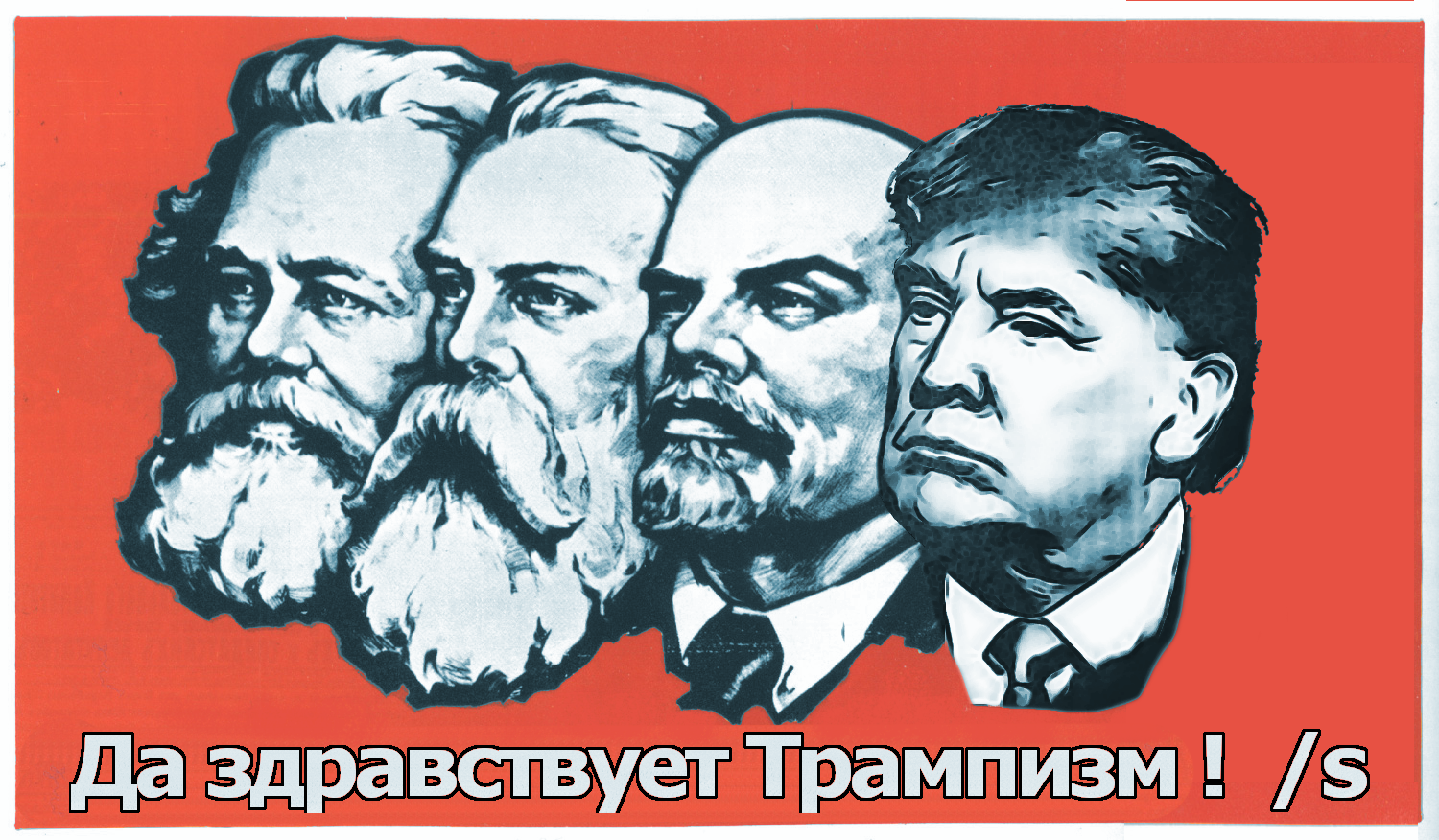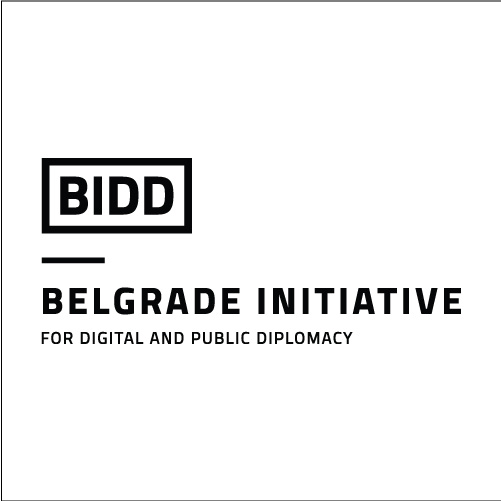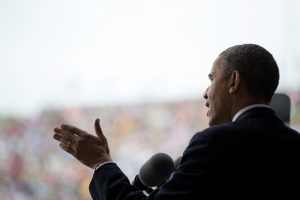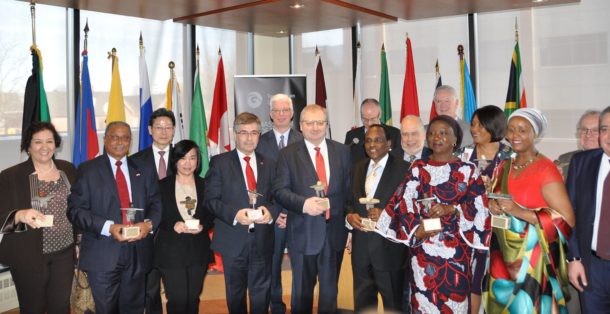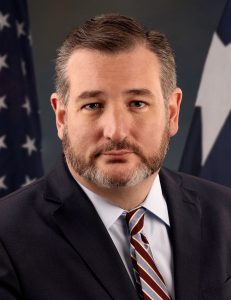James Jay Carafano, nationalinterest.org, February 27, 2019; original article contains links; see also (1) "Long live Trumpism!" image (not from article) from
"Long live Trumpism!" image (not from article) from
Here's a blueprint for how Donald Trump can better explain and use his national security strategy.
Donald Trump doesn’t believe in regime change or nation-building. He is skeptical of international organizations and institutions. He frets over allies that aren’t pulling their weight.
But Trump is no isolationist, and he’s shown no interest in “leading from behind.”
So what does Trump believe in?
His catchphrase, “America First,” suggests that the president views his job as protecting the vital interests of America. But the slogan itself doesn’t have much explanatory value.
Moreover, his large public persona, hyperbolic rhetoric and free-wheeling tweets often cloud an understanding of administration policy. This leaves the administration open to equally outlandish criticisms, with charges ranging from coddling dictators to ignoring human rights.
But tweets are not policy. The president’s policies have been neither mercurial nor unreasonable. Trump does, however, need to do a better job selling Trumpism around the world.
Articulating the Guiding Idea
The 2017 National Security Strategy offers a clear blueprint of Trump’s foreign policy. As my colleague Nile Gardiner summarized:
“It takes a clear-cut view of the immense challenges faced by the United States from an array of actors, from Russia, China, and North Korea to transnational, largely Islamist terror networks. In addition, the strategy emphatically rules out the idea of extending the hand of friendship to rogue regimes such as Iran.”
The document reveals a president committed to pursuing a “peace through strength” military and leaning forward in critical parts of the world where America’s vital interests are under assault.
For two years now the administration has largely followed the game plan: improving military readiness; crushing the Caliphate; stiff-arming Iran; reinforcing the U.S. presence in Europe; pushing back on Putin; challenging China and attempting to tame Kim’s nuclear program.
Even the president’s recent pronouncements on the way forward in Syria and Afghanistan are not necessarily a reversal of his stated course; they may just portend an adjustment to the American footprint to accommodate a long-term U.S. presence there. But the administration must size the footprint correctly; American cannot afford to repeat the kind of mistake Obama made in withdrawing from Iraq.
Running Out of Gas?
Executing the National Security Strategy requires more than adjusting military deployments, however. Trump faces a combative House of Representatives, confused allies overseas, and foreign competitors who may try to just wait out the Trump presidency.
To keep on track, the White House will need to make better use of the nonmilitary instruments of national power its disposal. To date, the administration has undervalued some of these tools.
In his resignation letter, Defense Secretary Jim Mattis rightly observed that the administration has done a poor job explaining U.S. policies to both friends and enemies. The president can be an unconventional statesmen if he wishes, but that does not absolve him of his responsibility to ensure the world clearly understands his policies.
To date, Trump has made only a handful of big speeches on foreign and national security policy. His August 2017 speech in Warsaw was quite impressive, as was his address on Afghanistan policy, delivered that same month. Trump should do more of these.
The administration’s public diplomacy [JB emphasis] efforts have been broadly lacking, as well. The White House has shown little sense of urgency about putting its imprint on this mission. Most of the key appointive positions remain vacant or occupied by Obama holdovers.
This is not entirely Trump’s fault. Helle Dale observes that “without fail, every time a Trump nominee gets closer to a Senate confirmation hearing to head the International Broadcasting Bureau, the media pounces and sounds the alarm.” But it is problematic that, for the most part, the White House seems content to do little about it.
This is not to say that Team Trump has touched none of the levers of power beyond troops, tariffs and sanctions. For example, National Security Advisor John Bolton recently laid out an Africa strategy that seeks to make better use of the instruments of engagement, influence and investment. The administration also championed passage of the Build Act , which will “facilitate the participation of private sector capital and skills in the economic development of countries with low- or lower-middle-income economies.”
But the administration still underperforms in selling Trump’s self-help brand of empowerment to America’s friends, allies and strategic partners. Though uninterested in democracy promotion, nation-building or regime-change, Trump wants to see our partners become freer, stronger, more prosperous, and more self-confident partners. He can do to speed up that outcome to America’s benefit.
The Art of the Sale
To keep the National Security Strategy on track, the administration will need to build bipartisan congressional support for U.S. institutions working constructively overseas. It will also need to help build the capabilities, expertise, and capacity of effective nongovernmental organizations and foreign agencies.
This will require a subordinate strategy to harness these institutions in support of the National Security Strategy—like a matryoshka doll that fits neatly inside a larger one.
As with any good strategy, this will require making hard choices and tackling big problems to drive significant change in organizational behavior. Good strategy does not simply catalogue or validate things already being done. Rather it fiercely commits to turning the ship of state in a different direction—toward a clear goal (ends) with a defined path (ways) and the means to get there.
Ends
Ongoing diplomatic efforts will have to be reshaped to match the National Security Strategy. What were once called “democracy promotion activities,” just for the sake of promoting democracy, now have to be justified as part of the American effort to manage great power competition.
The overall objective has to be to protect America’s interests by stabilizing global competition, not by remaking the world order. “What is in the best interests of a country?” is a different question than “What’s in best interests of the U.S.?” But efforts to protect U.S. interests should aim for the sweet spot where our goals and those of our partner countries converge. Programs that serve these interests gain the most credibility and legitimacy.
There is, of course, no single solution for achieving better outcomes everywhere. The United States will need to pursue a variety of programs to achieve a cluster of favorable outcomes.
One effort will aim to help our friends and strategic partners strengthen the resilience of their democratic institutions. The focus here should be to reduce corruption and promote good, stable governance and institutions—not to drive particular political outcomes (pushing one political party over another) and agendas (like marriage equality).
Another effort should aim to strengthen the resilience of institutions and infrastructure critical to our friends’ economic and military development. Chinese and Russian “ sharp power ” poses a strategic threat to many key allies. The administration will need to develop specific objectives to counter this threat.
A second cluster of initiatives should be aimed at our adversaries, exploiting their weakness and lack of credible institutions. Authoritarian regimes in Iran, Russia, and China pose the chief threats to regional stability today. Such regimes are most constrained when they feel pressure from within and without, simultaneously. Hence, it makes sense to support reform from within while exerting external pressure. Further, by understanding their instruments of internal repression, we better understand the means of repression these regimes export and how to deal with them most effectively.
The third cluster should aim to build capacity in states strategically relevant to Washington. What’s not needed is a quixotic effort to promote democratic ideology per se. Rather, we should promote legitimate, accountable institutions of governance.
Democracy is predicated upon the legitimacy of government for the governed. If, for example, the Muslim Brotherhood is voted to power, describing the country as a “democracy” is unhelpful because that country will bring poor leaders to power who will poorly serve the people.
As Cliff May of The Foundation for the Defense of Democracies has noted, it is not enough that a regime don the “trappings” of democracy (such as elections). What’s needed is “legitimate governance.” Ends ought to be framed and measured in these terms. Also, building weak regimes’ capacity for good governance will entail battling Russian and Chinese “ corrosive capital .”
Whether dealing with friends or enemies, America must be in it to win it. China, Russia, and ISIS see themselves as engaged in a decades-long struggle. So, too, must the United States. This will require developing phased short-, mid-, and long-term objectives.
Since the goal is managed competition and since many competitors led by adversaries will be around a long time, this is actually a generational challenge. Thus, even as the administration addresses immediate challenges, it must also plan for long-term, such as laying the “seeds of democracy”—like the “grassroots” work done by the National Endowment for the Democracy to identify and nurture democratic champions in countries relevant to U.S. foreign policy.
U.S. strategy clearly states that American power should be focused to ensure peace and stability in Europe, the Middle East, and the Indo-Pacific. But capacity-building efforts need not necessarily be focused in those same regions. For example, they might be more critically needed to ensure that democracy has a firm foundation in our own backyard, making the transatlantic community and Latin America the highest priority.
These efforts can be an “economy of force” tool, a primary means of affecting U.S. interests where great power competition is less intense. Countering Chinese influence in Latin America and Africa could be higher priorities. In addition, countering Russian influence in Central Europe could be a higher priority. Another area for increased efforts could be in the Pacific Islands region and South Asia.
Ways
Democracy promotion agendas from previous administrations have left a lot of baggage. This administration should formulate an agenda that focuses on governance (corruption), infrastructure and fundamental human rights. The emphasis will vary from country to country. In some cases, the priority might be religious liberty; in others, it might be economic freedom.
In particular, there needs to be better coordination and deconfliction, specifically where the strategy might be applied in these situations. See, for example, the report on fragile states prepared by a bipartisan task force assembled by the United States Institute of Peace.
There is little question that the president views strategic communications as an important tool. Yet, he has little interest in promoting a grand strategic narrative—something Reagan did so well in framing the struggle between the United States and the Soviet Union as a battle between good and evil.
Trump uses the presidency’s voice for near-term tactical purposes. Thus, top-down public diplomacy isn’t in the cards. Instead, the administration must develop an integrated public diplomacy effort. The State Department’s recent coordinated campaign on human rights/governance in Iran is a constructive example.
The by-words of a successful public diplomacy effort will be partnership, burden-sharing, and, ultimately, self-reliance. Latin America and Europe are nearby and vital to us. India, Japan, and Australia are key partners in the Indo-Pacific. There is, however, a lack of common vision on what needs to be done. More structured dialogues and initiatives will be needed to pull the team together. While the U.S. government should take the lead in this endeavor, our partners should help share the burden.
When it comes to implementation, there is less need for an overall, overarching worldwide approach than a plan to execute a nested series of specific, coordinated actions targeted to support national priorities. Action might be directed with an executive order rather than a strategy document.
Before crafting the plan, the administration should map a crosswalk between U.S. strategy and ongoing and planned activities to see what’s missing or what’s being done that’s not helpful. For example, do we still need to support the Community of Democracies ? Or do we just keep participating on auto-pilot?
In some cases, instruments ought to be used to help civil society hold governments accountable. But, U.S. efforts here need to be more selective and effective. Constructive accountability works best in permissive environments where regimes tolerate the influence of civil society. That is not to preclude activities in less permissive environments, but it means the administration must smartly align expectations, investments, and interests.
Means
A recent national survey found adequate public support for the public diplomacy efforts suggested here. And many of these programs enjoy strong bipartisan congressional support as well. That’s a good foundation to build on.
How resources are allocated is at least as important as how much are allocated. What matters is that spending fits in with the overall strategy. The ongoing U.S. foreign assistance review, if done right, could dovetail well with this effort.
Grassroots assistance and capacity building also have a place. Organizations like the International Republican Institute conduct grassroots programs that can be very effective. There is a case to be made for more, smaller, targeted grants that could be directed to local nonprofits. This could invigorate flexible, low-overhead programs currently hamstrung by burdensome oversight and compliance requirements.
Meanwhile, the larger programs should be scrutinized closely for how they spend U.S. taxpayer dollars. There is great potential here for finding significant savings.
Nontraditional NGOs —independent non-neutral humanitarian organizations that purposefully align their operations with U.S. policy—should also be part of the mix. Organizations like Spirit of America , which uses private donations to provide voluntary services to our soldiers and diplomats overseas, conduct the kinds of activity that would neatly fit into efforts to support the National Security Strategy.
There is also a question of whether we have adequate tools to evaluate freedom and democracy in its different contexts. Sadly, many U.S. government reports on human rights practices are not very helpful. Rather, they are overly complex, dedicated to meeting statutory requirements and not targeted for specific audiences. These reports should be overhauled, pared down, and tailored to provide actionable information that will help their audiences have a strategic effect.
Nongovernmental reports are a mixed bag. For example, there are several useful indices of economic freedom. On the other hand, there are real concerns about the legitimacy of Freedom House ratings and various measures of press freedom.
There are also concerns about the proliferation of “rights,” ongoing campaigns to expand or reshape what constitutes “freedom,” and demands to “re-baseline” the human freedoms discussion. This could open a place for a national commission to assess what freedom is and how to measure it—serving as a powerful driver for the domestic and global conversation.
What else must the plan include? A technology component, to be sure. The multi-stakeholder process of oversight for the Internet and cyber won’t work. China and Russia, through international forums or brute force, will balkanize the Internet to advance repression. America currently lacks an effective capacity to deal with this.
Further, America must develop the means to analyze and counter the range of cyber tools (AI) being used by Russia, China, and other authoritarian states to undermine others (such as election interference) and to expand their societal controls through monitoring behavior.
The U.S. government also must improve its dialogue and partnership with the private sector on the consequences of cooperation and exploitation by adversarial states. The recent example of the restricted Google search developed for China highlights this challenge.
Further, the government needs to engage with more than just the “tech community.” Mass media and institutions of higher learning could be valuable partners in the war against cyber-mischief and repression.
Finally, what’s needed most is leadership. Washington lacks an effective interagency capacity for granular coordination of specific programs. Rather than broad government reforms, we need solutions that work now for this government and this strategy.
The goal is not to gin up a whole-of-government approach, but to amass enough instruments of power to have a competitive advantage against a specific adversary for a specific mission or task. Part of that has to be getting more of the Trump team on board. As long as key appointive positions remain unfilled or occupied by uncooperative holdovers, efforts to implement a public diplomacy strategy that complements the National Security Strategy will be seriously—perhaps fatally—hamstrung.
A Heritage Foundation vice president, James Jay Carafano directs the think tank’s research on issues of national security and foreign policy.
Original Article
Instead of Democracy Promotion, Sell Trumpism to the World
Views: 2


